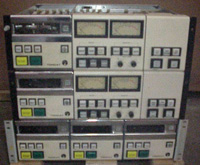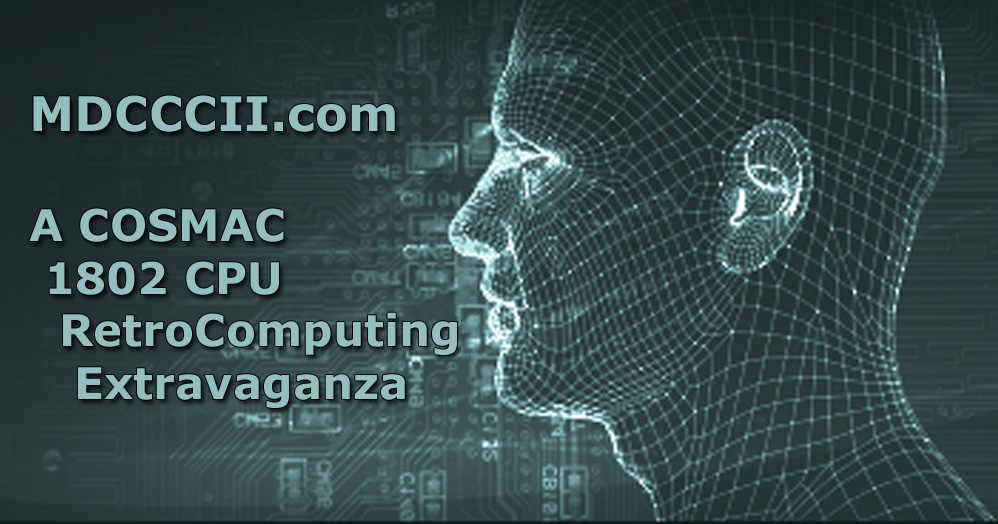Product Integration: Commercial & Scientific Applications
This information is gathered mostly by William Donnelly, from primary and secondary sources when possible, tertiary sources when that is all that is available. An attempt is made to double- (and triple-) check when possible from independent sources to insure reliability, validity, and accuracy. Most of the sources are virtual content found on the Internet World Wide Web. Citations and references are noted as much as possible. Some of this information is cross-posted to Wikipedia in small part when deemed appropriate. Information from Wikipedia is also sometimes incorporated here (and throughout). William Donnelly is an editor/contributor to Wikipedia, focusing on 1802-related topics. All itemized information found has been added to The Archive.
Microcomputer Systems and Space Technology have their own pages.
• Pinball Machines
In the late 1970s to late 1980s (~1978–1987), a Spanish company, Playmatic (now defunct; sold, acquired and re-acquired), used the RCA 1802 microprocessor to develop, manufacture and market approximately 30 CPU-based solid state pinball machines. (earlier machines were all-electro-mechanical) The electronics and programming development was actually sub-contracted to another Spanish company, EFOSA (or 'EFO SA', Electrónica Funcional Operativa SA), both located in Barcelona.
The first solid state / CPU-based pinball machines produced by Playmatic were Space Gambler, Big Town, Chance, and Last Lap (1978). The final machines were Skill Flight and Phantom Ship (1987). (note that there were two 'bingo game' machines, that were not traditional pinball machine designs, whose production dates are unknown: Miss Disco, as a 2-card and 7-card model) Prior to the solid date machines, and along with them, electro-mechanical pinball machines were also produced. (over 60 machines in total from 1968)
Playmatic designed and assembled the physical 'boxes', including the electro-mechanical components, installed the hardware and software provided by EFOSA via fabrication, and marketed and sold the machines in Spain and Europe, and exported to other countries. Some machines have found their way to the United States, and some existing machines are now in collector's collections. Some of the models are rare. Known information about various models ranges from very little to extensive.
That these machines used an RCA 1802 microprocessor has been absolutely verified through found photos of the printed circuit board electronics, schematics found in Internet-published repair, service and troubleshooting manuals (PDF file documents), disassembly of Internet-published ROM machine code, and by admission of prominent players of the times in, and former employees of, the companies via articles and a published interview. (see references and citations below)
EFOSA also worked with a group, division or subsidiary of Playmatic called Cidelsa, to use the 1802 in kiosk arcade video games, although later arcade units were distributed through Playmatic. (see Arcade section below)
Citations and References: (pertinent only; non-inclusive)
• Internet Pinball Database search
• Playmatic repair and troubleshooting manuals
•
RetroLaser Article: EFOSA y Cidelsa, pioneros del videojuego para recreativas (Spanish)
—
EFOSA and Cidelsa, recreational video game pioneers (English via Google Translate)
• Arcade Games
In the early 1980s (~1980–1982), a Spanish company, Playmatic (now defunct; sold, acquired and re-acquired), used the RCA 1802 microprocessor to develop, manufacture and market several kiosk arcade video games. Except for the last couple of games, Playmatic branded the games with a group, division or subsidiary called Cidelsa. The electronics and programming development was actually sub-contracted to another Spanish company, EFOSA (or 'EFO SA', Electrónica Funcional Operativa SA), both located in Barcelona.
The first arcade unit was called Destroyer (1980), and was followed by the Altair (1981), which had an update called Altair II, and then Draco (1981). It has been discovered that at least one other arcade game was created in 1982, Nightmare. The exported version of this game was called Clean Octopus, which is not a separate game. There may have been others, and apparently there were some machines that were designed and prototyped, but not manufactured.
Playmatic designed and assembled the physical 'boxes', installed the hardware and software provided by EFOSA via fabrication, and marketed and sold the machines in Spain and Europe, and exported to other countries, including the United States. Some existing machines are now in collector's collections. Some of the models are rare. Known information about various models ranges from little to moderate.
These arcade video games used the RCA CDP1869 sound generator and CDP1870 color graphics integrated circuits, part of the Video Interface System (VIS) group of chips. Some models used the AY8910 (AY-3-8910) programmable sound generator IC, as well. (the latter was controlled by the National Semiconductor COP400 4-bit microcontroller)
That these machines used an RCA 1802 microprocessor has been verified, although the information is not as extensive as for the pinball machines. No (known) found photos of the printed circuit board electronics, or schematics found in Internet-published repair, service and troubleshooting manuals (PDF file documents), were verified. (although manuals are known to exist – they just have not been scanned and uploaded yet) No disassembly of Internet-published ROM machine code occurred, but these ROM snapshots are said to exist. There is an admission by prominent players of the times in, and former employees of, the companies via a published interview. Most of the references are from secondary anecdotal information off of interested party websites from articles and documented information. And the EMMA 02 Emulator supports a couple of Cidelsa games (but without ROMs). (see references and citations below)
EFOSA also worked with the Playmatic 'parent' company to use the 1802 in approximately 30 pinball machines. (see Pinball section above)
Citations and References: (pertinent only; non-inclusive)
• EMMA 02 Emulator Software Cidelsa page
•
Recreativas.org Article (Database of Spanish Gaming Machines):
Cidelsa – Historia de la empresa (Spanish)
—
Cidelsa – History of the Company (English via Google Translate)
•
RetroLaser Article: EFOSA y Cidelsa, pioneros del videojuego para recreativas (Spanish)
—
EFOSA and Cidelsa, recreational video game pioneers (English via Google Translate)
•
RetroLaser Article: Imágenes de Nightmare – Clean Octopus de Playmatic (Spanish)
—
Nightmare Images - Clean Octopus by Playmatic (English via Google Translate)
• Gaming History database search with links to each arcade game entry
• ComputerEmuZone.com – The Spanish Games – Cidelsa search results
• Commercial Devices
• Science & Technology
• Automotive
• Other
• Tomcat

In April 1980, at the National Association of Broadcasters conference (NAB Show), Pacific Recorders and Engineering Corporation (PRE) introduced the Tomcat tape cart system used in radio broadcasting. The machine utilized an 1802 microprocessor as its controller. There is little information about this other than what is stated here via source citations.
These machines replaced the older use of reel-to-reel magnetic tape machines, and used 8-track-tape-like magnetic tape cartridges for commercial advertisement playback and similar functions. The machines could be "programmed" to start and stop various cartridges, helping to further automate the radio broadcasting system with more ease of use.
Citations and References: (pertinent only; non-inclusive)
• BM/E, Broadcast Management Engineering Magazine, September 1980, page 41 (PDF)
• Broadcast Engineering Magazine, July 1983, page 80 (PDF)
• Broadcast Engineering Magazine, July 1983, page 80 (PDF) – (local 3-page summary archival document)
